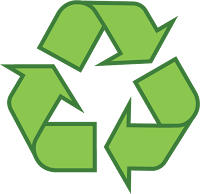Make it a GREEN Halloween!
Here are my top 10 tips to have an eco-friendly Halloween:
1. Make your own costume out of items you already have around the house and if you need to purchase anything, thrift before you buy new items.

2. Compost your Jack O' Lantern and any other natural decorations like gourds and corn stalks.
3. Choose to hand out organic, non-GMO candy or non-edible items like stickers or temporary tattoos.
4. If you are handing out non-edible items, place a teal colored pumpkin outside your door so children with allergies or sensitivities know they can trick-or-treat safely at your house.
5. Make your own fake blood out of natural products and skip the packaged products that can contain toxic chemicals. Try combining cream cheese and cherry juice or cornstarch and natural food coloring.
6. When choosing decorative lights, go with LED or better yet, solar powered!
7. Don't leave your door open all night and lower your thermostat by a few degrees so your furnace doesn't have to work as hard while greeting trick or treaters.
8. Buy locally produced foods, candies and treats. Look for goodies with minimal packaging and/or those packaged in recyclable materials.
9. Use beeswax or soy candles and avoid paraffin-based waxes.
10. Donate your costumes and decorations to a local charity or thrift shop.













































